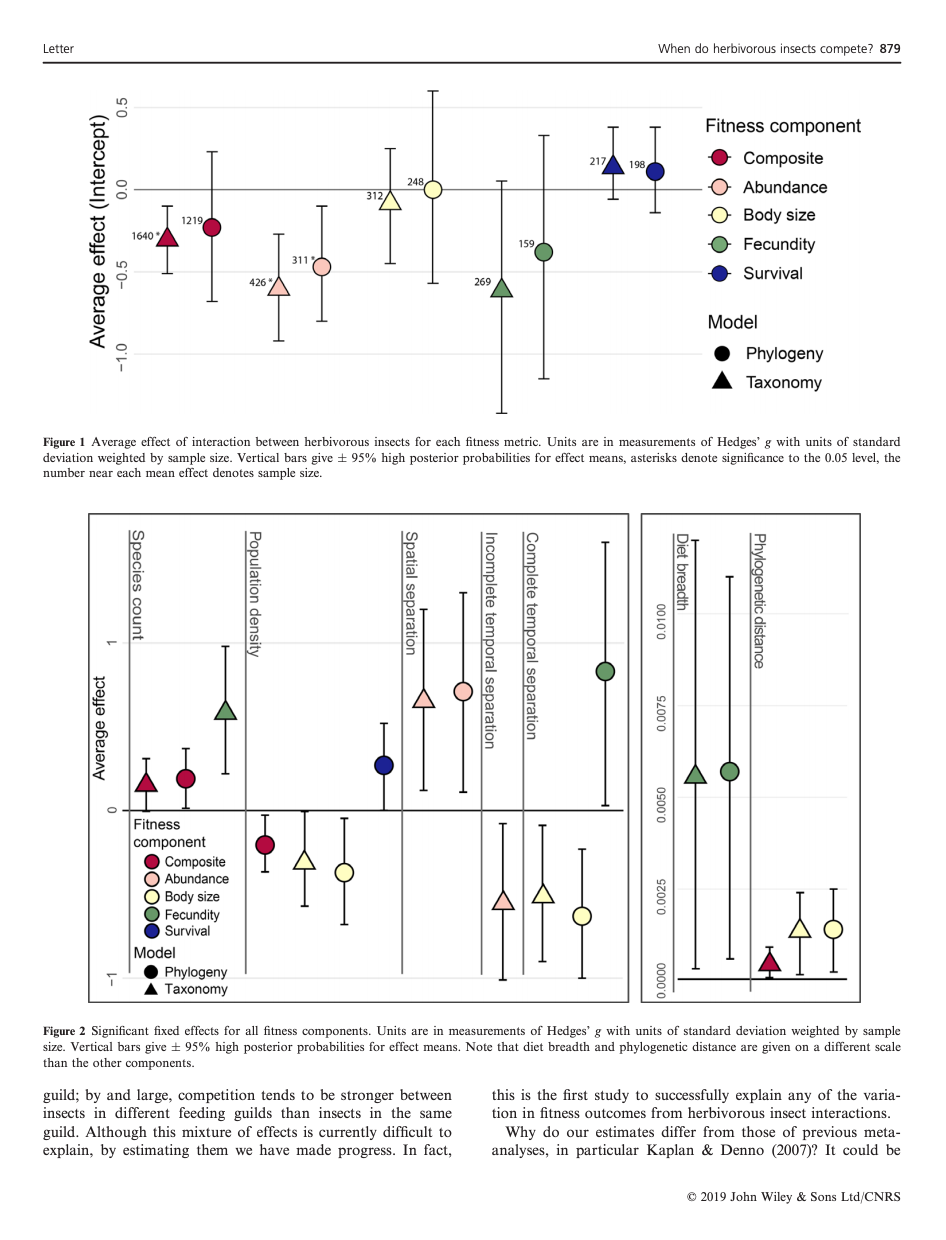
Citation
Bird, G., C. Kaczvinsky, A. E. Wilson, and N. B. Hardy. 2019. When do herbivorous insects compete? A phylogenetic meta-analysis. Ecology Letters 22:875-883. (2019 College of Agriculture Outstanding Publication Award)
Abstract
When herbivorous insects interact, they can increase or decrease each other’s fitness. As it stands, we know little of what causes this variation. Classic competition theory predicts that competition will increase with niche overlap and population density. And classic hypotheses of herbivorous insect diversification predict that diet specialists will be superior competitors to generalists. Here, we test these predictions using phylogenetic meta‐analysis. We estimate the effects of diet breadth, population density and proxies of niche overlap: phylogenetic relatedness, physical proximity and feeding‐guild membership. As predicted, we find that competition between herbivorous insects increases with population density as well as phylogenetic and physical proximity. Contrary to predictions, competition tends to be stronger between than within feeding guilds and affects specialists as much as generalists. This is the first statistical evidence that niche overlap increases competition between herbivorous insects. However, niche overlap is not everything; complex feeding guild effects indicate important indirect interactions.